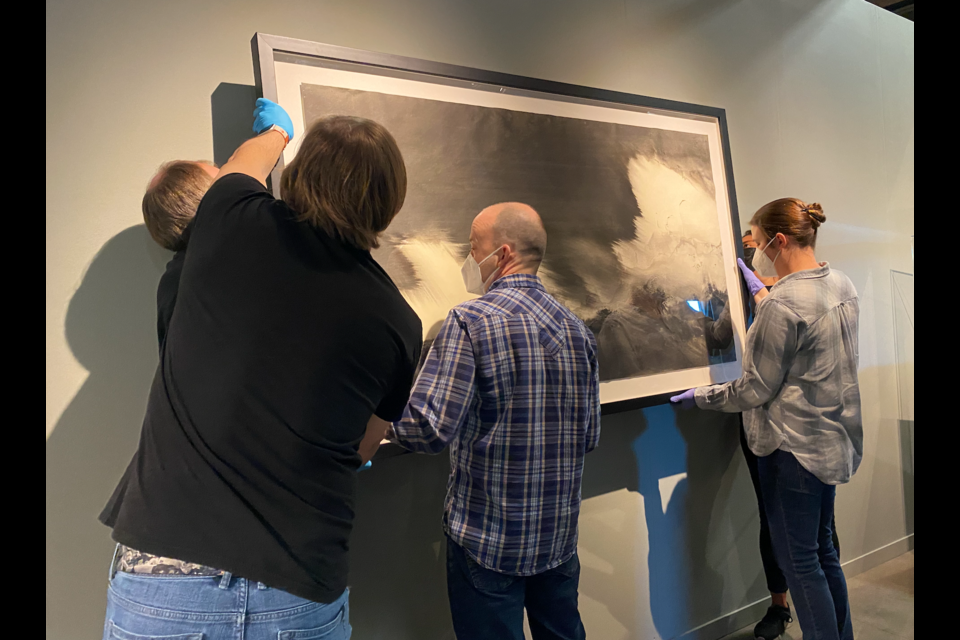Part of the Longmont Museum’s mission is to expose the Longmont community to cultures around the world. To accomplish that, the museum is opening a new exhibit, Washi Transformed: New Expressions in Japanese Paper.
The exhibit, which opens at 9 a.m. on Saturday, features the work of nine Japanese artists who all use the traditional Japanese paper, Washi, to create contemporary pieces of art.
The works of art featured in the exhibit range from two-dimensional, delicately concocted scriptures composed of Washi to larger, three-dimensional sculptures.
In the middle of the exhibit, the work Blessed Rain by Ayomi Yoshida will have attendees enveloped in a circle of long pieces of Washi hanging from the museum’s ceiling. Surrounded by blue Washi adorned with raindrops, the piece conveys a sense of serenity in its beholder.
Other three dimensional pieces, such as a 20-piece set of sculptures by Kakuko Ishii, exude a vibe similar to that of a botanical garden with their resemblance to corral.
“It’s pretty amazing to see how artists can use the same material – Washi – and create such vastly different looking things,” Joan Harrold, marketing and communications director said. “One of the purposes of the exhibit is just to show that this type of material is used in all of these unexpected ways.”
The exhibit experience also offers an opportunity for people to learn about the traditional Japanese process of creating Washi. In the hallway adjacent to the exhibit, also known as the Portal Gallery, there is an informational video and tools to show how Washi is created, according to Harrold, as well as samples of the three different kinds of Washi that come from the three Japanese trees used to curate it.
“I want visitors to learn what Washi is and realize the long tradition of Washi,” said Jared Thompson, the exhibit curator at the Longmont Museum, “and that these artists are taking that tradition and using it in a contemporary manner … and really pushing the envelope on what you can do with it. It’s just nice to see art from another country and what they like aesthetically, and show the people of Longmont what that looks like.”
Washi Transformed is a touring exhibit which is making its second stop in the United States in Longmont following the Allentown Art Museum in Pennsylvania last year.
The staff at the Longmont Museum felt inspired to implement this particular exhibit by drawing upon the strong history Longmont has with the Japanese community, Harrold said.
“This exhibit gives us a good opportunity to connect with (the Japanese) community,” Harrold said, “and also use the exhibit as a launching point to create programming that can help to educate on a lot of different topics.”
While the Washi Transformed exhibit sheds light on one Japanese tradition, the museum will tailor some of its other events and programs to explore additional facets of Japanese culture.
During upcoming Art and Sip nights, community members can expect to paint origami cranes, lotus flowers and other Japanese motifs. On April 24, there will be a screening of “And Then They Came For Us” — a film which explores how Executive Order 9066 forced the incarceration of Japanese American families — followed by a conversation where local Japanese families can highlight their own experiences in front of the museum’s audience.
Throughout the museum’s process of implementing the Washi Transformed exhibit, as well as the complementary events and programming, “it’s really important for us to work with the community that is actually connected to that culture,” Harrold explained.
In order to do so, museum staff have been working alongside the Asian Pacific Association of Longmont as well as Japanese community members throughout the process, Harrold said, “just to try to make sure that we’re presenting everything in a way that’s culturally sensitive and appropriate.”
Apart from bringing a piece of Japanese culture to Longmont, which Harrold attributes as a win for the Longmont Museum, the success of the exhibit will be gauged by whether a deeper connection grows between the Longmont community and its Japanese community members as a result, according to Harrold.
“It’s really important to share (Japanese community members’) stories and for the Japanese culture to be brought here locally,” she said.



